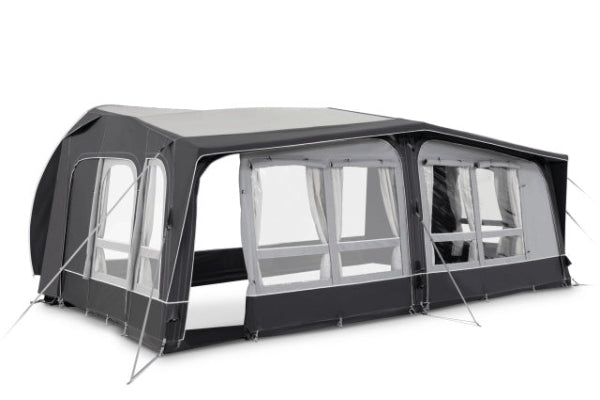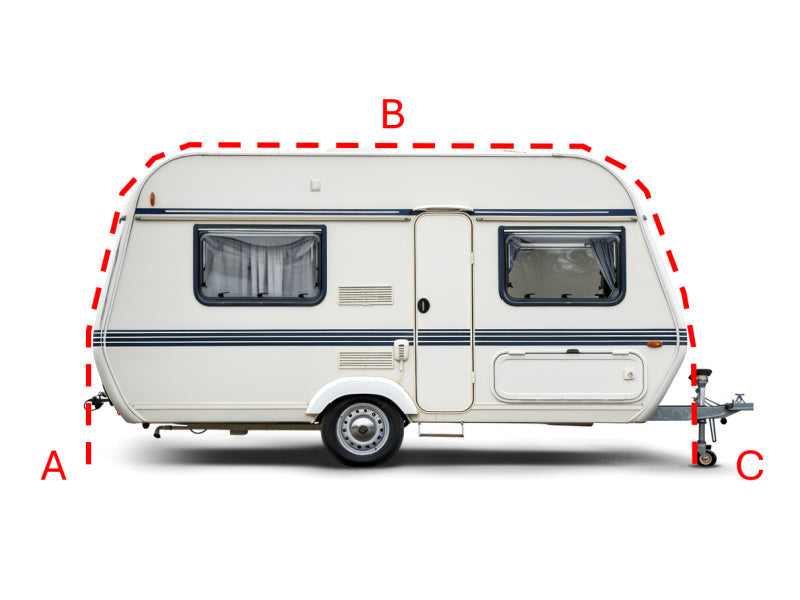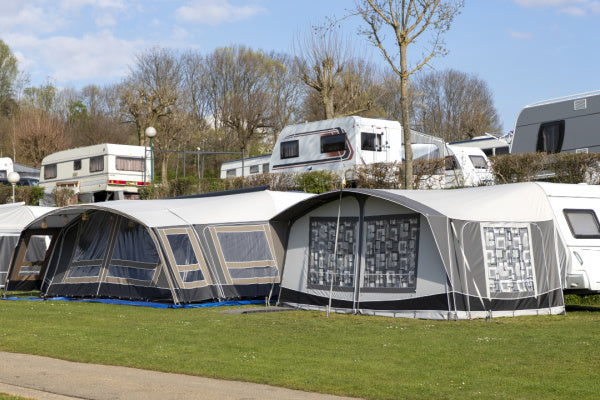Caravan Awning Setup: A Step-by-Step Guide
Setting up caravan awnings needn't be a wrestling match with poles and fabric! Short answer: it's a straightforward 3-step process of preparation, assembly, and securing. Whether you're a camping novice or a seasoned traveller, this guide will help you avoid the classic "whoops, where does this bit go?" moments.
Erecting Your Caravan Awning: A Step-by-Step Guide
Ever stared at your caravan awning with a mix of determination and dread? Getting it right might seem tricky, but with the right approach, it's surprisingly straightforward. This comprehensive guide breaks down the process into manageable steps, helping you transform that pile of poles and fabric into a comfortable outdoor living space.

Want us to find the perfect awning for you?
Preparing for Setup
Choosing Your Pitch
The perfect spot makes all the difference between a stable awning and a wobbly nightmare. Look for clear overhead space without lurking tree branches or power lines. Good neighbours are great, but keeping a respectful distance from other pitches matters too.
Think about access - you'll want enough room to move around comfortably while setting up. The ground should be relatively flat, and the space should accommodate both your awning and any additional outdoor furniture.
Level Ground
Forget spirit levels at your peril - they're absolute game-changers for awning setup. Uneven ground leads to pooling water and structural headaches nobody wants to deal with.
Got a slope? Levelling ramps or blocks under your caravan wheels can save the day. Take time getting this right - it's the foundation of your entire setup.
Sun and Wind Considerations
British weather loves to keep us guessing, but smart positioning can make life much easier. Watch for prevailing winds and think about sun patterns throughout the day.
Setting up on the sheltered side of your caravan offers natural wind protection. Morning sun might be lovely, but afternoon heat can turn your awning into a sauna without proper planning.

Gathering Your Equipment
Nothing ruins momentum like realising essential bits are still in storage. Spread everything out and check against the manufacturer's list before starting.
Common items include:
- Main awning frame and fabric
- Support poles of various lengths
- Pegs suited to your ground type
- Guy lines and tensioners
- Basic tools (mallet, spirit level, measuring tape)
Awning Poles and Straps
Think of poles as your awning's skeleton - they need proper care and attention. Sort them by size and type before starting. Check each component for damage or wear, especially after winter storage.
Straps should be clean and free from fraying. Replace any questionable parts now rather than discovering problems mid-setup.
Pegs and Guy Lines
Different ground conditions demand different pegging strategies. Rocky soil needs robust pegs, while sandy ground might require broader options for better grip.
Pack extra pegs - they have an uncanny knack for disappearing or bending at crucial moments. Guy lines should be clean and untangled, ready for immediate use.
Optional Extras
While basic setup works fine, certain additions can transform your awning experience:
Storm straps provide crucial extra stability in challenging weather. Groundsheets keep the space clean and comfortable. Additional weights offer peace of mind during gusty conditions. An awning skirt helps eliminate those pesky drafts.
Assembling the Awning Frame
Extending the Awning
The awning rail represents your starting point. Feed the awning through slowly and steadily - rushing often leads to snags or damage.
Keep the movement smooth and controlled. Watch for any resistance that might indicate a problem needing attention.
Unrolling and Adjusting Arms
Balance matters here. Extend support arms evenly on both sides, working systematically. Check each locking mechanism clicks firmly into place.
Take particular care with telescopic components - they should move smoothly without forcing.
Raising and Positioning the Awning
This stage requires patience and attention to detail. Keep the frame parallel to your caravan as it rises. Proper alignment now prevents headaches later.
Watch for any twisting or uneven movement. Adjust gradually until everything sits just right.
Using Poles for Support
Vertical poles need precise positioning for optimal stability. Set them at the manufacturer's recommended angles. Height adjustments should be minor and even across all supports.
Attaching to the Caravan
Create a solid connection between awning and caravan. Check all attachment points twice. The awning should sit snugly against the caravan wall without gaps or strain.

Securing the Awning
Pegging Down Guy Lines
Start from corners and work systematically. Angle pegs at 45 degrees for maximum hold. Space guy lines evenly for balanced tension.
Keep lines taut but not overstretched. Remember, you're aiming for stability, not a trampoline effect.
Securing Sides and Front
Ground conditions determine your pegging strategy. Rocky soil needs different techniques from soft ground. Work methodically around the awning's perimeter.
Pay special attention to high-stress points. These often need additional reinforcement.
Using Side Panels and Fronts
Tackle panels once the main structure stands secure. Line up zips and fixings carefully before attaching. Double-check all connections for proper seating.
Final Checks and Adjustments
Ensuring Stability and Tension
A thorough walk-around inspection catches potential issues early. Look for even tension across all panels. Check alignment with your caravan remains true.
Give poles and fixings a final once-over. Proper positioning helps prevent future problems.
Adjusting Guy Lines and Poles
Fine-tuning makes the difference between good and great setup. Adjust guy lines for even tension. Check pole heights match perfectly.
Listen for any creaking or straining sounds - they often indicate areas needing attention.
Checking for Leaks and Damage
Prevention beats cure every time. Inspect carefully for:
- Fabric tears or stress points
- Proper sealing around joints
- Secure fixings and attachments
- Clear water runoff paths
Regular checks throughout your stay keep small issues from becoming big problems. Pay special attention after strong winds or heavy rain.
Remember, setting up a caravan awning gets easier with practice. Each setup teaches valuable lessons about what works best for your specific equipment and conditions. Keep these guidelines handy, and soon you'll handle the process like a seasoned pro.
Other content you might like:





Leave a comment